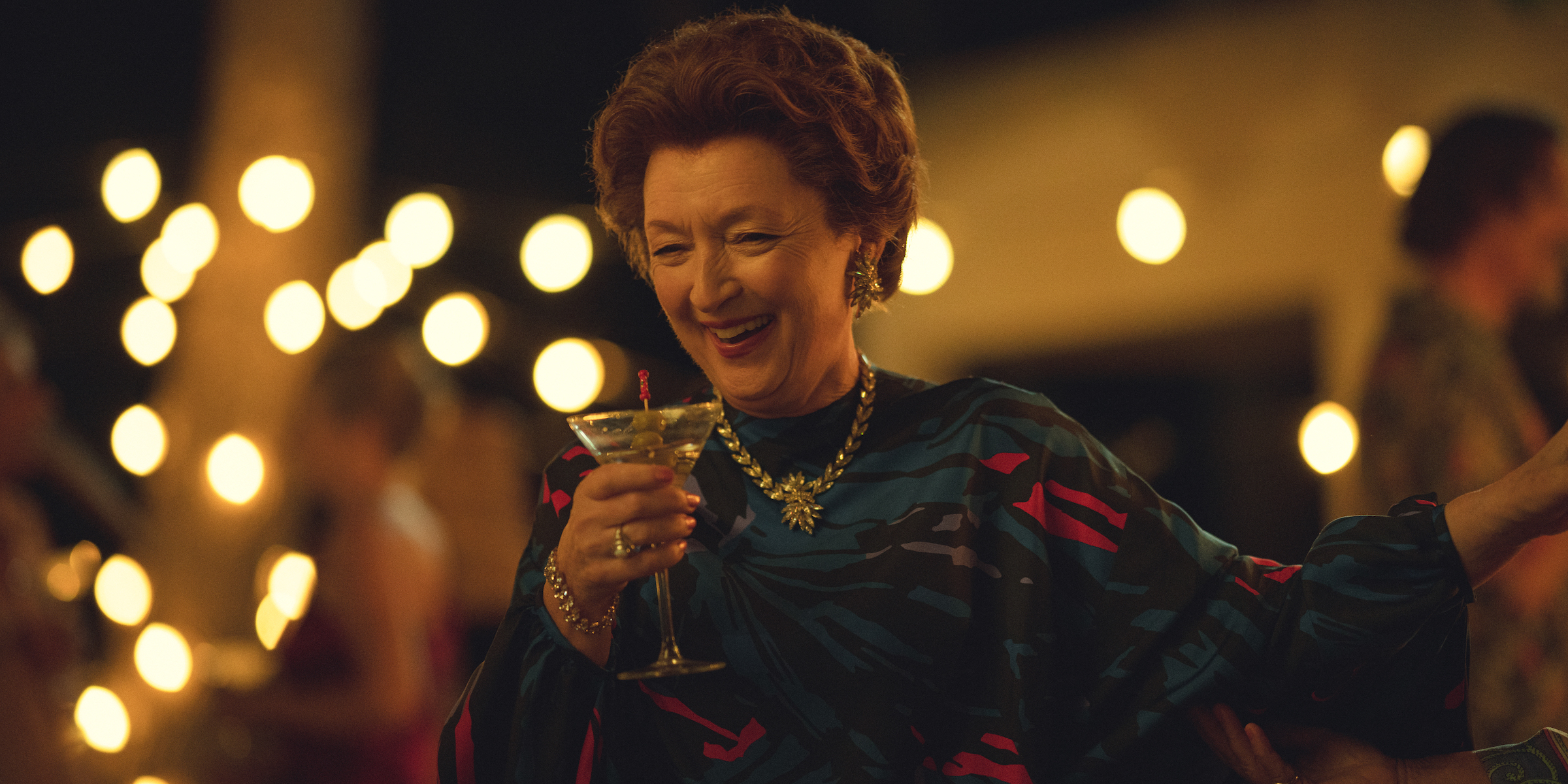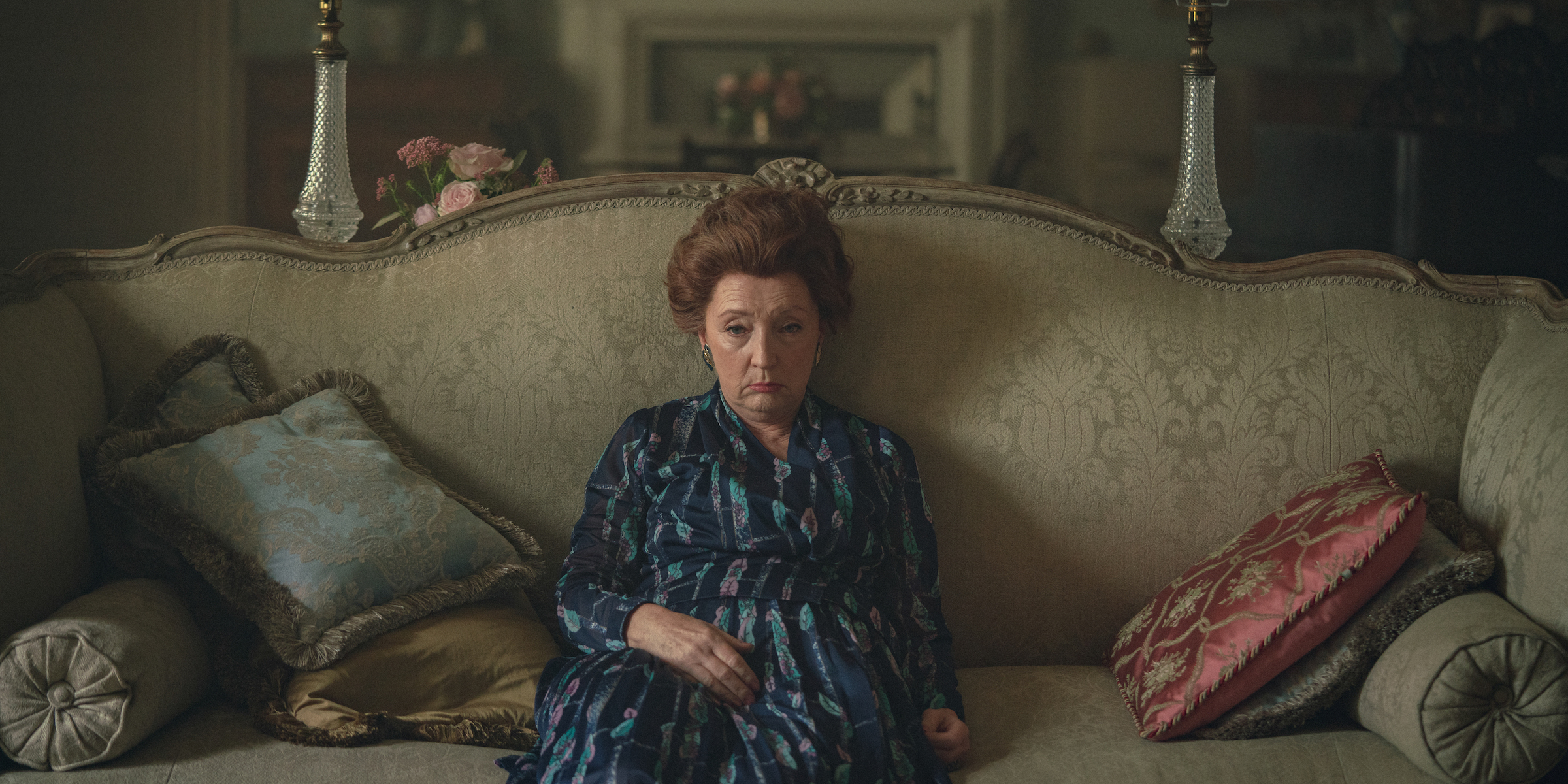After six seasons entertaining viewers as the royal family’s party girl, Princess Margaret’s run on The Crown comes to a brutal end with the series’ final episode drop on Dec. 14.
As well as capturing the highs of the special relationship between the Queen and Margaret—including a night off royal duties to sneak out for VE day celebrations at London’s Ritz hotel in 1945—episode 8 focuses on the aging Princess’ wellbeing.
Margaret, played by Lesley Manville, is shown jetting off to her holiday home in Mustique, where she is charming her social circle at a gathering. The royal is working the room when she suffers a minor stroke in front of friends. Recounting the experience in a telephone conversation with the Queen shortly after, Margaret says she has been airlifted to a hospital in Barbados.
The incident portrayed in the show is a real event that occurred during a 1998 trip. As in real life, the historical drama depicts Margaret ailing from a number of other health problems as doctors try to steer her toward a preventative lifestyle.
One particularly graphic scene shows Margaret suffering an additional stroke while taking a hot bath. She slips and her feet remain in the scalding water, while she is unable to call for help or remove herself from the bath. The graphic scene, while shocking, is another event drawn from the real Princess’ final years before her death. It is a period experts say was marred by her declining health.
“As far as her later life is concerned, the problem is her health caught up with her. She chain-smoked, and the other difficulty was that she had that dreadful accident in the bath,” royals expert Richard Fitzwilliam tells TIME. “She was discovered on the floor, it was awful,” he adds. But this was just the start for the Queen’s only sibling.
Here’s what to know about the end of Princess Margaret’s life and the aftermath of her death.
Read more: The Crown Was a Six-Season Argument for the End of the Monarchy—Even If It Didn't Know It
What were Margaret’s final years like?

Margaret had reportedly given up smoking at the time of her first stroke, in February 1998, in Mustique. She complained to friends that she was experiencing dizziness, chest pains, and a headache when it happened.
A year after her stroke, the princess scalded her feet during an incident in the bath, as depicted in The Crown. A series of strokes left her partly paralyzed and she struggled to walk without support or a wheelchair. As a result, she was largely unable to carry out public engagements.
“For one of her last public appearances, it was said that the Queen was absolutely horrified by the image of Princess Margaret with the dark glasses in a wheelchair, because that symbolized the sadnesses of her later years,” Fitzwilliam says, referring to images of Margaret attending the Queen Mother’s 101st birthday celebrations.
“There’s no question that appearance meant a tremendous amount to her. Because after all, that's what she was known for—to be glamorous and in the center of things,” says Fitzwilliam. He adds that her illnesses, paired with a separation from her party identity, affected public perception of her, and likely her view of herself.
No longer the socialite she was when healthy, her last public appearances all took place in 2001 and were few and far between. These included the Chelsea Flower Show in May, the 80th birthday service for Prince Philip, the late Duke of Edinburgh, in June, and the 100th birthday of Princess Alice, Duchess of Gloucester, in December.
Margaret died on Feb. 9, 2002. She was cremated and interned into the King George VI Memorial Chapel in St George's Chapel, Windsor, where the Queen and Phillip have since been laid to rest.
Read more: How The Crown’s Depiction of Kate and William’s Courtship Stacks Up Against Reality
How did people react to her death?

Margaret died peacefully while asleep in the hospital, with her two children Lord Linley and Lady Sarah Chatto by her side.
Fitzwilliams notes that there was limited public grief for Margaret, and that people were more forthcoming after the passing of the Queen Mother a month later, as many respected the latter for her wartime efforts and commitment to King George VI.
“To be perfectly honest, I don't think it had an impact on the public,” says Fitzwilliam, adding that her death mostly impacted the Queen. “There was a great deal of sadness there, because of the closeness of the family.”
He adds that the monarchy was keen to present itself as the ideal family, but with Margaret’s death, and the Queen Mother’s passing in quick succession, the Queen’s childhood family unit was broken up.
What is Margaret’s legacy?
As a so-called “spare” to the throne, Margaret didn’t have a formal role in the royal family, and so she often took liberties, lived lavishly, and rebelled. “She was the society beauty,” Fitzwilliams says, “so she’d been called the Diana of her time, but not because of anything to do with charity,” he adds.
Fitzwilliams describes Margaret as existing within a “gilded cage,” unable to do much as she did not have a particular purpose. “She loved late nights, people couldn't leave until she'd left. She was extremely social and extremely high profile,” he says of the royal who was most known for her charisma. “She was haughty but naughty.”
While Margaret may not have had much of a role in the monarchy, her life serves as a symbol of some of the injustices inherent to the monarchy. She was prevented from marrying her great love, Captain Peter Townsend of the Royal Air Force, because he was a divorcee, as per a royal tradition. In 2002—the year of Margaret’s death—the Church of England revoked their rule against remarriage for a divorced person with a living spouse.
More Must-Reads from TIME
- Cybersecurity Experts Are Sounding the Alarm on DOGE
- Meet the 2025 Women of the Year
- The Harsh Truth About Disability Inclusion
- Why Do More Young Adults Have Cancer?
- Colman Domingo Leads With Radical Love
- How to Get Better at Doing Things Alone
- Michelle Zauner Stares Down the Darkness
Write to Armani Syed at armani.syed@time.com